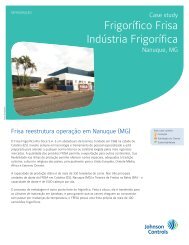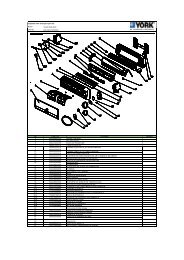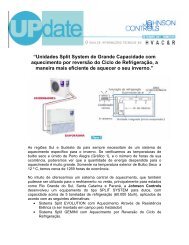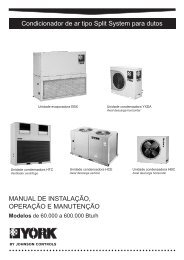Manual Técnico - Chiller YORK® Absorção YPC ... - Johnson Controls
Manual Técnico - Chiller YORK® Absorção YPC ... - Johnson Controls
Manual Técnico - Chiller YORK® Absorção YPC ... - Johnson Controls
Create successful ePaper yourself
Turn your PDF publications into a flip-book with our unique Google optimized e-Paper software.
How It Works<br />
FORM 155.17-EG4<br />
CHILLING CYCLE<br />
LD01609(R)<br />
CHILLING CYCLE<br />
<strong>YPC</strong>’s remarkably efficient two-stage absorption refrigeration<br />
cycle uses water as the refrigerant and lithium<br />
bromide as the absorbent. It is the strong affinity these<br />
two substances have for each other that makes the cycle<br />
work. The entire process occurs in hermetic vessels in<br />
an almost complete vacuum.<br />
The large diagram above indicates the complete chilling<br />
cycle. The six steps are detailed here and on the<br />
next page, with corresponding numbers in the diagram<br />
to show where each step takes place. <strong>YPC</strong>’s two-stage<br />
absorption chilling cycle is continuous; however, for the<br />
sake of clarity and simplicity, it is divided into six steps.<br />
1. Solution Pump/Heat Exchangers<br />
A dilute solution of lithium bromide and water descends<br />
from the Absorber to the Solution Pump. This flow of<br />
dilute solution is split into two streams and pumped<br />
through heat exchangers to the First-Stage Generator<br />
and to the Second-Stage Generator.<br />
<strong>YPC</strong>’s exclusive two-way split of solution flow virtually<br />
eliminates the possibility of crystallization (solidification)<br />
by allowing the unit to operate at much lower solution<br />
concentration and temperatures than series flow systems.<br />
Note: There are two heat exchangers, but only one is<br />
shown for illustrative purposes.<br />
2. First-Stage Generator<br />
A heat source heats dilute lithium bromide coming from<br />
the Solution Pump/Heat Exchangers. This produces<br />
hot refrigerant vapor which is sent to the Second-Stage<br />
YORK INTERNATIONAL<br />
5


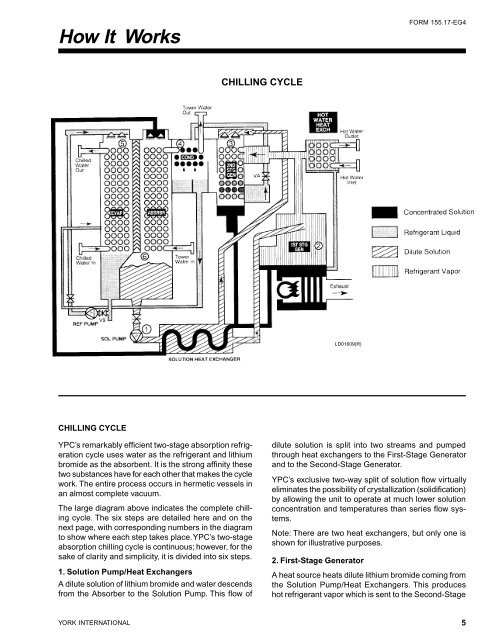
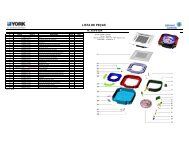

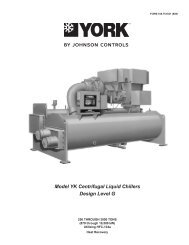
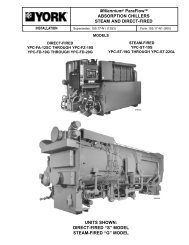
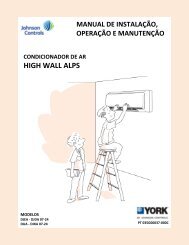
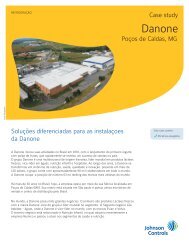


![[PDF] Catálogo Técnico YP Corrigido Corel 9 - Johnson Controls](https://img.yumpu.com/49244478/1/190x245/pdf-catalogo-taccnico-yp-corrigido-corel-9-johnson-controls.jpg?quality=85)


